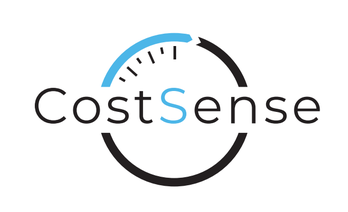Why Ratio Analysis is Crucial for Your Business?
In today’s competitive business landscape, understanding the financial health of your company is more critical than ever. One powerful tool that can provide deep insights into your business’s performance is ratio analysis. By examining various financial ratios, you can gain a clearer picture of how well your business is doing, where improvements are needed, and how you can make strategic decisions for the future.
What is Ratio Analysis?
Ratio analysis involves evaluating the relationship between different financial statement items. These ratios can measure profitability, liquidity, efficiency, and solvency, among other aspects of your business. By comparing these ratios over time or against industry benchmarks, you can track your company’s financial health and performance.
What is DuPont Analysis?
One of the most comprehensive tools in ratio analysis is the DuPont Analysis.
This method breaks down the components of return on equity (ROE) into three parts:
- Profit Margin
- Asset Turnover
- Financial leverage
Here’s how it works:
1. Profit Margin:
This ratio measures how much profit your company generates for each dollar of sales. It’s calculated by dividing net income by revenue.
Monitoring and understanding your profit margin is crucial for several reasons:
- Indicator of Efficiency: Profit margin reveals how efficiently your company is converting revenue into profit. A higher profit margin indicates that your business is managing its costs effectively while maximizing revenue
- Decision-Making Tool: Knowing your profit margin helps you make informed decisions about pricing, cost control, and product or service offerings. For instance, if your profit margin is lower than the industry average, it might signal the need to reduce costs, increase prices, or improve operational efficiency
- Attracting Investors and Financing: Investors and lenders often look at profit margins to assess the profitability and financial stability of a business. A healthy profit margin can make your company more attractive to investors and can improve your chances of securing financing at favorable terms.
Benefits of Measuring Profit Margin:
- Identifying Profit Leaks: By regularly measuring your profit margin, you can quickly identify areas where costs are higher than expected.
- Strategic Pricing: Understanding your profit margin enables you to set prices strategically. You can balance competitive pricing with profitability to ensure that your business remains viable while attracting and retaining customers.
- Long-Term Planning: Profit margin analysis is essential for long-term financial planning. It helps you forecast future profitability, set growth targets, and plan for capital investments or expansions with a clear understanding of your financial capabilities
Example: Retail Clothing Business
Consider a retail clothing business that notices its profit margin has decreased over the past year. By measuring and analyzing the profit margin, the business discovers that the cost of raw materials has increased significantly, eating into profits. Armed with this information, the company decides to renegotiate terms with suppliers and streamline inventory management to reduce waste. As a result, the business improves its profit margin, enhancing overall profitability and financial stability
2. Asset Turnover:
This ratio assesses how efficiently your company uses its assets to generate sales. It’s calculated by dividing revenue by total assets.
Monitoring and understanding your Assets Turnover is crucial for several reasons:
- Efficiency Indicator: Asset turnover shows how well a company is using its assets, such as equipment, inventory, and property, to produce revenue. A higher asset turnover ratio indicates that the company is making good use of its assets to generate sales, while a lower ratio might suggest inefficiency or underutilization of assets
- Cost Management: Monitoring asset turnover helps companies identify inefficiencies in asset usage, which can lead to cost savings. For instance, if your asset turnover is lower than desired, it may indicate that your company is holding onto too much inventory or that some assets are not being used to their full potential.
- Investment Decisions: Asset turnover can influence decisions about investments in new assets or the sale of underperforming ones. By understanding how current assets contribute to revenue, a company can make informed decisions about where to allocate resources for maximum return.
Benefits of Measuring Assets Turnover:
- Optimizing Asset Utilization: Regularly measuring asset turnover helps ensure that all assets are being used effectively. This can lead to better asset management practices, such as more efficient inventory management or more strategic use of property and equipment.
- Enhancing Profitability: Companies with high asset turnover ratios are typically more profitable because they generate more revenue from their assets. By improving asset turnover, a company can increase its sales without necessarily increasing its asset base, thereby boosting profitability
- Enhancing Profitability: Companies with high asset turnover ratios are typically more profitable because they generate more revenue from their assets. By improving asset turnover, a company can increase its sales without necessarily increasing its asset base, thereby boosting profitability
Example: Manufacturing Company
Imagine a manufacturing company that notices its asset turnover ratio has been declining over the past few years. Upon investigation, the company finds that its inventory levels have been gradually increasing, leading to excess stock and tying up capital that could be used elsewhere. By addressing this issue—such as by improving inventory management and reducing excess stock—the company is able to increase its asset turnover ratio. This improvement leads to more efficient use of its assets, freeing up capital for other investments and ultimately increasing revenue.
3. Financial Leverage:
This component looks at how much of your company’s assets are financed by equity versus debt. It’s calculated by dividing total assets by shareholders’ equity.
Monitoring and understanding your Financial Leverage is crucial for several reasons:
- Risk Assessment: Financial leverage indicates the level of debt a company is carrying relative to its equity. A higher leverage ratio means the company is using more debt to finance its operations, which can increase financial risk, especially in times of economic downturn
- Return on Equity (ROE) Amplification: Financial leverage can amplify the returns on equity if the company generates returns greater than the cost of debt. This means that by borrowing funds, a company can potentially increase its profits without increasing its equity base, thus boosting the ROE. However, this comes with increased risk
- Solvency and Creditworthiness: Creditors and investors often assess a company’s financial leverage to determine its creditworthiness and long-term solvency. A company with excessive leverage might struggle to meet its debt obligations, which can affect its ability to secure financing in the future or lead to higher interest rates on loans
Benefits of Measuring Financial Leverage:
- Optimizing Capital Structure: By regularly measuring financial leverage, a company can optimize its capital structure—finding the right balance between debt and equity.
- Enhancing Growth Opportunities: With a clear understanding of its leverage, a company can strategically use debt to finance growth initiatives, such as expanding operations, acquiring new businesses, or investing in research and development.
- Risk Management: Monitoring financial leverage helps in identifying potential risks associated with debt. Companies can take proactive measures to reduce leverage when necessary, such as paying down debt, refinancing, or issuing more equity, thereby reducing the likelihood of financial distress
Example: Real Estate Development Company
Consider a real estate development company that decides to take on significant debt to finance a large project. By measuring its financial leverage, the company realizes that its debt levels have risen sharply compared to its equity. This increase in leverage has the potential to amplify returns if the project is successful, but it also heightens the risk if the market conditions change or if the project faces delays.
To manage this risk, the company decides to balance its financial leverage by securing additional equity investment. This move reduces the overall leverage ratio, mitigating the risk while still allowing the company to pursue the growth opportunity. As a result, the company can move forward with the project with a more stable financial structure, ensuring long-term solvency and profitability
Why is DuPont analysis beneficial to a Business?
DuPont analysis is a powerful tool for understanding the underlying factors contributing to a company’s financial performance. By breaking down ROE into its core components, businesses and investors can identify strengths and weaknesses in profitability, asset utilization, and financial leverage. This detailed insight helps in making more informed strategic decisions and assessments.
Empower your business with the insights provided by ratio analysis today and ensure you’re on the right path to achieving your financial goals.
Stay proactive. Stay informed. Stay financially healthy.
— Slava

Slava Tkachev, CostSense Owner & CEO
Slava Tkachev is an accomplished CFO & Financial Controller with 15+ years of extensive experience across industries, within both large corporations & small businesses. Slava holds two esteemed accounting designations: Chartered Professional Accountant (CPA) in Ontario & Certified Management Accountant (CMA) in the USA.
Have questions?
Phone: (905) 650 – 3614
Email: [email protected]


